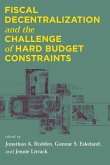Value for money is about obtaining the maximum benefit with the resources available. While value for money decisions are a daily reality in all our lives, as we constantly judge between costs and benefits, this will soon become a major challenge for all public sector organizations.
Public sector organizations are about to enter one of the most challenging environments they have ever had to face as they bear much of the cost of the credit crunch. Across the world public sector purses will shrink as national governments pay off the debt of averting global economies from the horrors of depression and deal with the budget deficits resulting from reduced tax-income during the recession.
In order to cope with the upcoming challenges, perhaps more than ever before, public sector leaders need to instill strong performance improvement disciplines into their organizations: disciplines that enable these leaders to fully understand:
1. What key outcomes and priority deliverables they must accomplish
2. How to allocate reduced financial resources so to make the most positive impact on service levels and outcomes
3. Where to reduce costs and improve efficiencies without jeopardizing service delivery
In this timely book the authors address the efficiency drive following the credit crunch using real-life examples and case studies from across the world, such as Audit Scotland, Belfast City Council, Brisbane City Council, City of Charlotte, Civil Service College (Singapore) FBI, NHS, Ministry of Works (Bahrain), Royal Canadian Mounted Police, US Postal Service.
Value for money is about obtaining maximum benefit with the resources available; in today's economy, making the right value for money decisions is a major challenge for all public sector organisations
Public sector organizations are about to enter one of the most challenging environments they have ever had to face as they bear much of the cost of the credit crunch. Across the world public sector purses will shrink as national governments pay off the debt of averting global economies from the horrors of depression and deal with the budget deficits resulting from reduced tax-income during the recession.
In order to cope with the upcoming challenges, perhaps more than ever before, public sector leaders need to instill strong performance improvement disciplines into their organizations: disciplines that enable these leaders to fully understand:
1. What key outcomes and priority deliverables they must accomplish
2. How to allocate reduced financial resources so to make the most positive impact on service levels and outcomes
3. Where to reduce costs and improve efficiencies without jeopardizing service delivery
In this timely book the authors address the efficiency drive following the credit crunch using real-life examples and case studies from across the world, such as Audit Scotland, Belfast City Council, Brisbane City Council, City of Charlotte, Civil Service College (Singapore) FBI, NHS, Ministry of Works (Bahrain), Royal Canadian Mounted Police, US Postal Service.
Value for money is about obtaining maximum benefit with the resources available; in today's economy, making the right value for money decisions is a major challenge for all public sector organisations








